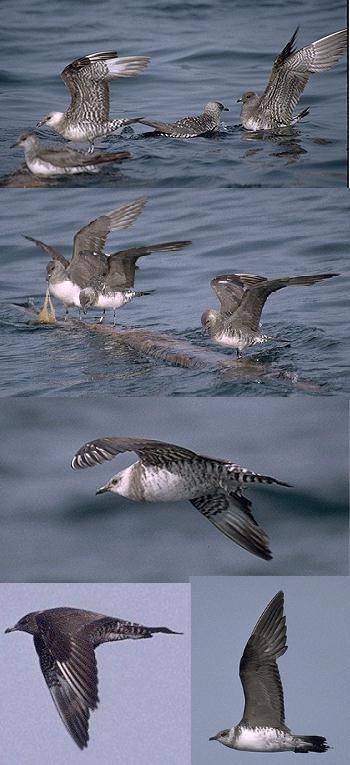
Updated August 19th, 2007: a few new photos; new entries are in maroon text.
This presumed 3CY Long-tailed Jaeger Stercorarius
longicaudus was photographed at Braunig Lake, San Antonio, on August 17, 2007 - with the generous help of Keith Kubena. The previous day the remains of Tropical Storm Erin had pushed up from Corpus Christi and through San Antonio: A note on behavior: this bird forages almost exclusively by circling at mid-height over the lake, then dropping slowly, ending in a slow, controlled landing, and then picking at a tiny silver fish (schad, probably) at the surface . Only once has it been seen showing any interest in another bird: apparently a Black Tern with a tiny fish flew close to the jaeger, and it got up and chased it halfheartedly for a few seconds before dropping back to land on the water, without getting the Black Tern's fish. There are two juvenile Lauging Gulls and 10+ Black Terns and two Forster's Terns foraging over the lake, often flying quite close to the jaeger - it appears to ignore them. Here is a quote from "Skuas and Jaegers" by Klaus Malling Olsen about Parasitic Jaeger: "Even juveniles feed almost solely by kleptoparasitism."
NOTE: there seem to be a few feathers missing from above the base of the bill; my experience with gulls tells me that this small anomoly can significantly change our perception of the size of the bill:

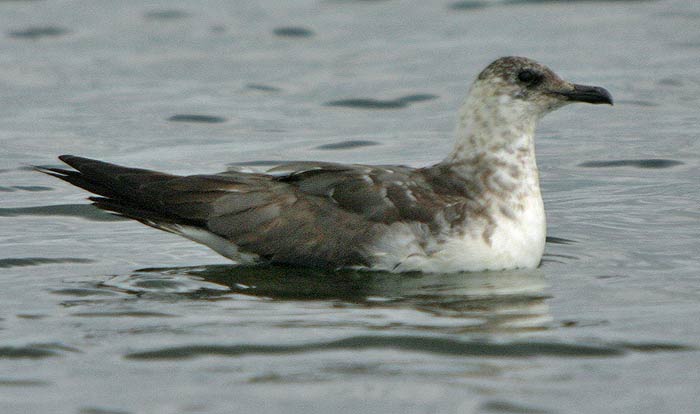
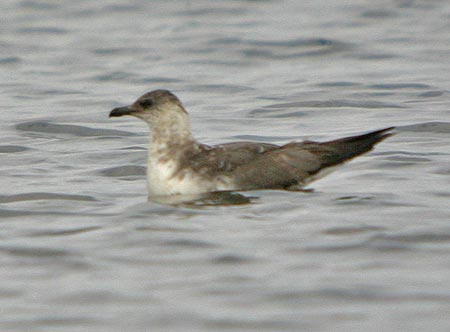
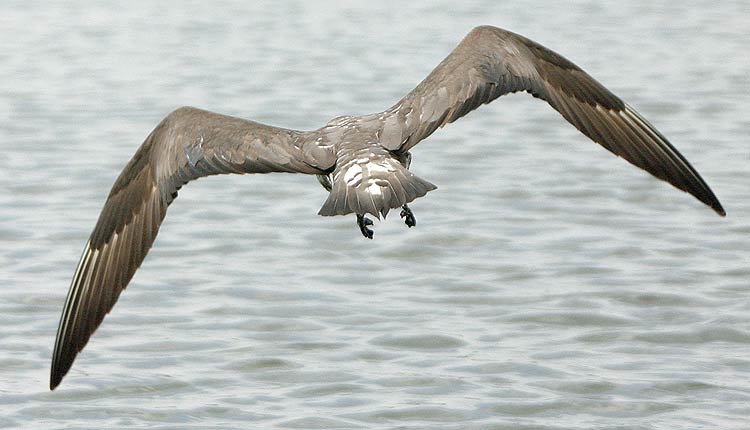
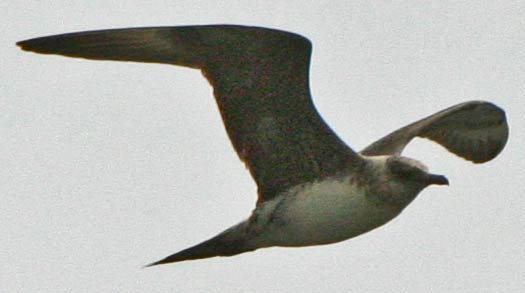
I think there night be a few small feathers missing at the upper base of the bill, subtly changing the "feel". Note the relative lengths of the bill nail and the basal portion; this seems good for Long-tailed but wrong for Parasitic NOTE: on this image and any other with comparative numbers placed in the image, the numbers are not in any scalable unit - they are merely the number of pixels that my software measured between the lines; their actual value is meaningless - their relative difference is the key data:
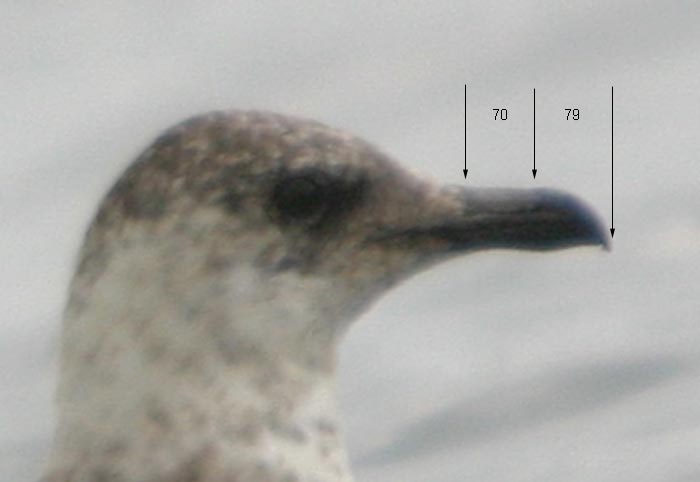
In a note published in Birding World Magazine in 1990 Magnus Ullman stated that the position of the nostril is another way of assessing the bill structure: for Long-tailed Jaeger the distance from the "loral point" (most distal point of feathering on the side of the bill base) to the start of the nostril is shorter than the distance from the end of the nostril to the bill tip; on both other species of jaeger it is longer. Magnus also reiterated that "the bill of Long-tailed Jaeger is just as thick as that of Arctic (=Parasitic), and sometimes even thicker". In the image below it is clear that on this nostril feature the Braunig bird fits Long-tailed, and is wrong for Parasitic - even with the more unfavorable measurements (those above the bill)... Also note that part of the bill basal to the rear of the nail is a paler, gun-metal tone compared to the blackish distal part; the earliest this appears (per "Skuas and Jaegers") in Parasitic is 2nd-summer, while for Long-tailed it can appear in 1st-summer:
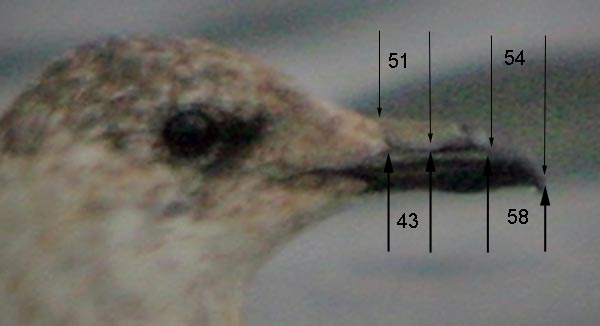
Note in the images below the legs; they seem to be pale with dark "knees" and feet. This is the normal color for adult (and preceding ages) of Long-tailed, while the larger two jaegers start as juveniles with a similar color pattern, but then the legs become all-black. I don't know when this change takes place, but I seem to recall that it does so while the bird is still fairly young, so if this individual is in its third-calendar-year, the leg color looks much better for Long-tailed: Update:- "Skuas and Jaegers" by Klaus Malling Olsen says that 1st-summer Parasitics have tibia and foot dark, tarsus pale with variable amount of dark spotting; 2nd-summer Parasitics have leg and foot dark but with up to 50% of the tarsus pale; this bird has pale tibia (also visible in stills of Malcolm Swan's video) and mostly/completely unmarked tarsi, so to be a Parasitic it would have to be younger than 2nd-Summer; even as a 1st-summer Parasitic the legs would be rather retarded in coloration, apparently:
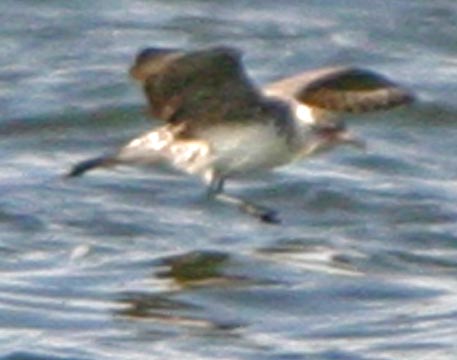
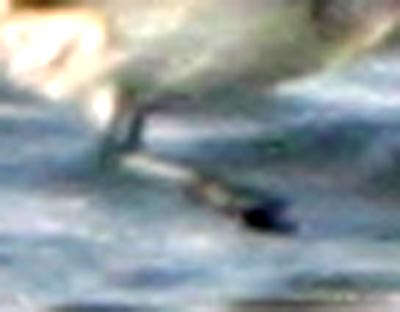
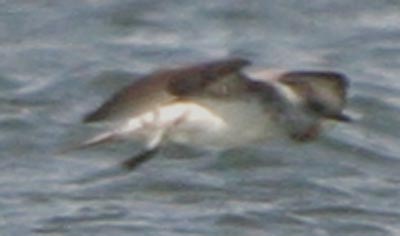
Below is an enlargement of the upperparts and tail: note the paleness of the freshly-grown scapular and wing covert feathers. The tail on jaegers is normally replaced starting with the central pair of feathers (R1) and (more-or-less) working outwards; a close look at the tail feathers here indicates that R2 (2nd-innermost pair) seem to be the oldest, judging by the apparent wear. The R1 seem to be the freshest in that they are the palest and grayest at the base. This suggests that either a complete molt of the tail has recently begun (complete tail molt is started in Feb-March for Parasitic and Long-tailed, so this is very unlikely) , or a second replacement of R1 has occurred. Dittmann and Cardiff published a piece about jaeger identification - click here to read it - and here is a quote (their "T1" is the same central tail feathers as my "R1"):- " T1s of 1st and 2nd spring Long-taileds are often worn to a thin, thread-like projection. The T1s are molted twice a year in Pomarine and Long-tailed; these species may lack T1s (or appear that way) during molt, and possess short T1s in basic plumage. Parasitics shed their T1s only once a year during a complete post-breeding molt." There is variation, of course - moreso in immatures than adults, but the state of general molt combined with apparently fresher R1 is a better fit for Long-tailed:
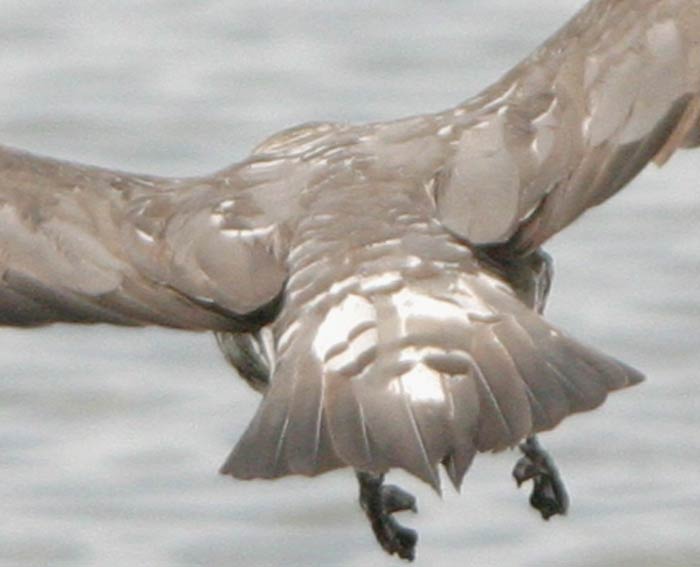
This photo is from August 19th: the axillaries are molting but still have a number of the barred-type feathers; the underwing coverts have a smaller number of obscurely-barred feathers mixed with mostly plainer feathers - but these plainer feathers are rather pale, providing fairly clear contrast with the dark newer secondaries (but less-so with the worn and faded older ones). I cannot find any reference about relative tone of adult-like plain underwing coverts in the jaegers, but a peruse of images on the Internet suggests that Long-tailed does actually have paler gray plain-type underwing coverts than either Pomarine or Parasitic. Finally, looking at the greater primary coverts of the far wing, I wonder if the outer ones are fully-grown?.:
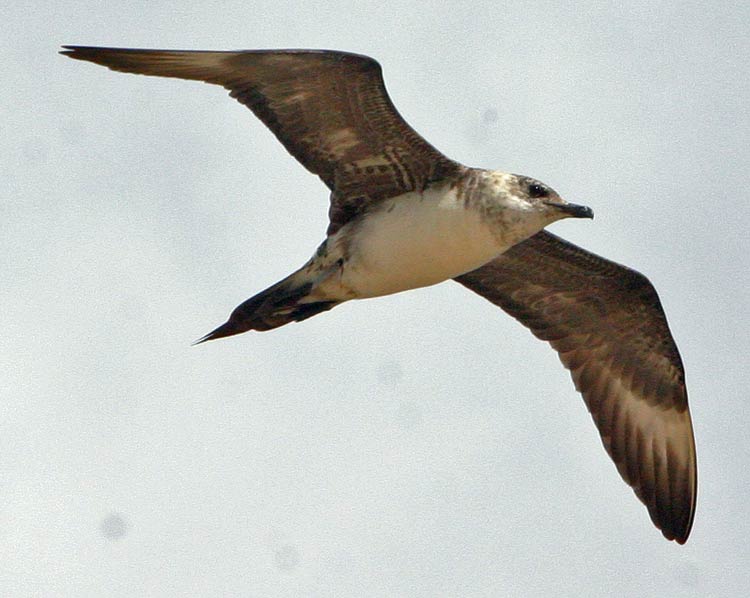
I took the photos below on a pelagic out of Arica, northernmost Chile, in late November 1992. These are Long-tailed Jaegers feeding in seaweed on a floating plank of wood. Compare the bottom-right bird with the Braunig individual, noting the almost complete replacement of primaries in the Chilean bird at a time some three months later than the Braunig bird:
